Categories > Guides and Tips

History of Thai Food: Traditions, Origins, and Influences
Ever wonder how Thai food came to be? This article explains the history of Thai food and also provides you with some good recipes to try.
Thai food is an international treasure. It’s influenced by various cultures, including Indian, Chinese and European.
This cuisine has evolved over thousands of years. It is all about texture and flavour, with a variety of aromas and tastes like hot and spicy, along with sweet, salty, and umami.
To know more about the origins of Thai food, keep on reading!
The Origin of Thai Food
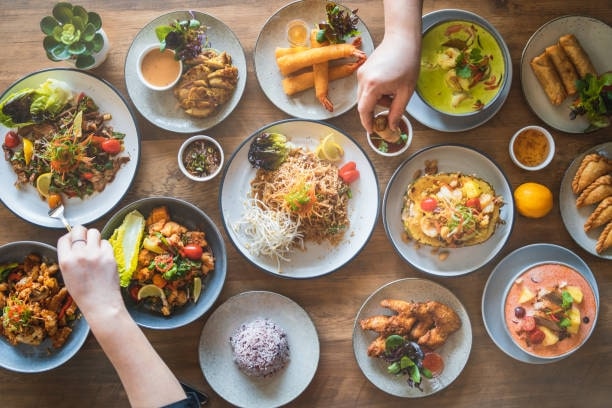
The history of Thai food dates back over 1,400 years, when the territory we call Thailand began to be heavily inhabited by a major movement of people from parts of contemporary China.
The type of Thai food you get depends on where in Thailand it comes from. The north, northeast, south, and centre are some of these areas.
Historically, the majority of meals typically featured aquatic plants, animals, and herbs.
Due in part to the Buddhist heritage, large amounts of meat were generally avoided.
As a result, meat was frequently used minimally for flavouring, much like western cultures would use seasoning, with a modest amount going a long way in a Thai meal.
This traditional Thai cuisine featured stewing, baking, and grilling as techniques of food preparation. Deep-frying and stir-frying also gained popularity over time.
Regional Influences in Thai Food
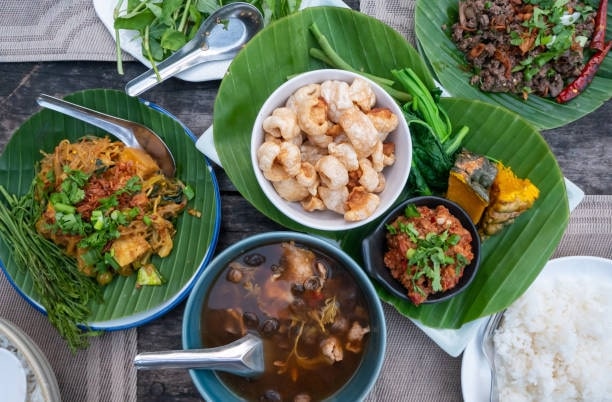
Thai food is influenced by the Thai people’s history, culture, and geography. It is also affected by Thailand’s climate.
Thailand’s cuisine consists of many regional cuisines that have been adapted over time to suit each region’s tastes and ingredient availability.
Some dishes have evolved over time to become national or even international styles of their own; for example, Tom Yum Goong (noodle soup) and Pad Thai are both well-known dishes internationally that originated in Thailand.
Thailand is a large country with a varied terrain, and over time, this has caused regional variations in its cuisine styles to emerge. Thailand currently has four different cuisine styles.
1. Southern Thai Cuisine
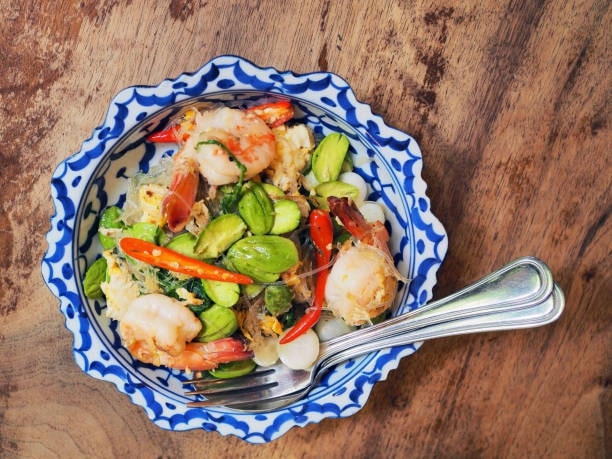
Due to its popularity as a major tourist destination, southern Thai cuisine is the most well-known outside of Thailand.
Being extensively inspired by the flavours and spices used in Indonesia and Malaysia, southern Thai cuisine is much hotter than Thai food from other parts of Thailand and is renowned for its sharp and pungent flavour.
Southern Thai cuisine is known for its balance of sweetness and spiciness, with an emphasis on fresh ingredients and unique cooking methods.
This cuisine consists of more than just curries and stir-fries. The region’s cuisine includes a wide variety of soups, salads, and snacks that are prepared in a myriad of ways.
The most common ingredients used in Southern Thai cuisine include fish sauce, tamarind pulp, lime juice, coconut milk, peanuts, chilli peppers, cilantro leaves and root vegetables such as ginger and galangal.
The most popular dishes include chicken satay (skewered chicken marinated in a blend of spices), green curry (chicken or beef cooked in coconut milk with green chilies) and pad Thai (stir-fried rice noodles with shrimp).
2. Northern Thai Cuisine
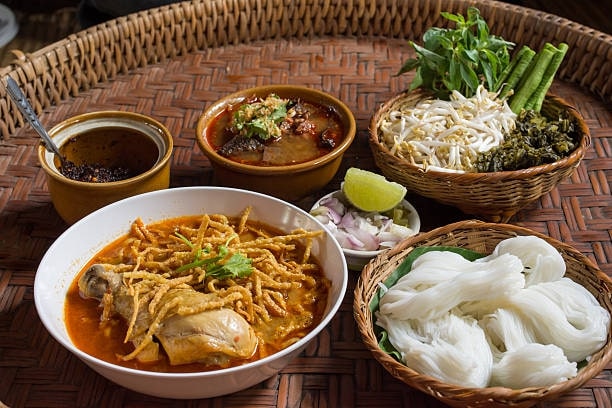
The predominant flavours in Northern Thai cuisine are salt and bitter; it is neither as spicy nor as sweet as the food from Thailand’s sweeter centre area.
In general, northern Thai cuisine is milder than that of the rest of the nation. Sticky rice is liked and is customarily formed into little balls with the fingers.
Northern Thai cuisine is a melting pot of flavours and influences, which has led to the creation of some of the most unique dishes in the world.
The cuisine is characterised by its use of fresh herbs and spices, along with an emphasis on texture and presentation. It’s also known for its wide variety of dishes that are eaten with sticky rice instead of silverware.
Northern Thai cuisine focuses on fresh ingredients—vegetables, mostly—and lots of greens, including cilantro, basil, mint and lettuce leaves.
3. Northeastern Thai Cuisine
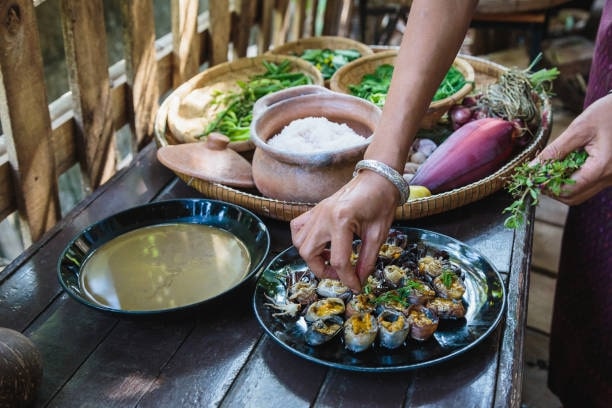
Northeastern Thai cuisine, also known as Isaan cuisine, is heavily inspired by Lao and Cambodian traditions.
The cuisine largely relies on the preservation and fermentation processes due to the hot and humid climate.
Like other Thai cuisine, northeastern Thai dishes tend to feature a well-balanced combination of sweet, salty, sour, bitter, and spicy flavours.
Northeastern Thai cuisine is also characterised by its use of lots of fresh herbs and spices, particularly lemongrass, lime leaves, and galangal (a root similar to ginger).
You’ll also find fish sauce in many northeastern dishes. The food tends to be spicy and sour at the same time—it’s like a complex flavour bomb!
The flavours are so intense that they can seem overwhelming to those who aren’t used to them, but once you get used to them, it’s hard to go back.
4. Central Thai Cuisine
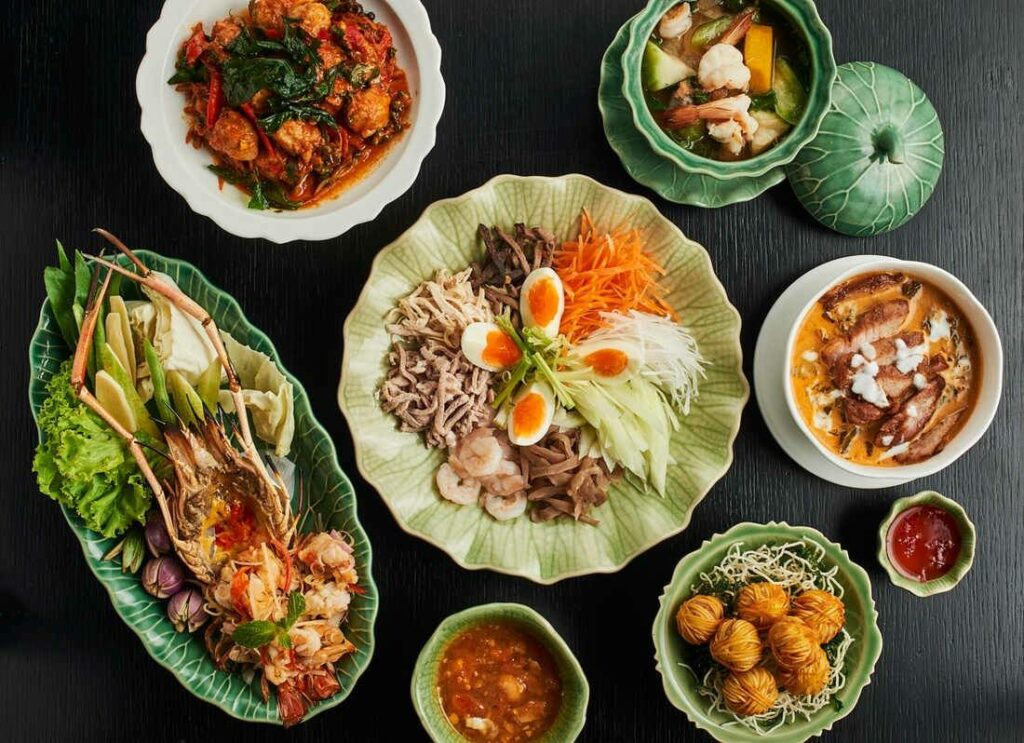
Central Thai cuisine is a little bit of everything. It’s a melting pot of cultures and flavours, thanks to the area’s geographic location and its proximity to other countries.
This Thai cuisine is one of the most diverse and exciting cuisines in the world. It’s known for its balance of sweet and salty, hot and cold, spicy and mild. Also, Central Thai food can be found all over Thailand, especially in Bangkok.
The food in the central region is similar to that of the north and south, except sticky rice is favoured to the fragrant Jasmine version.
What makes the central region cuisine special is because it is home to royal cuisine. This style of cooking, which was developed at the royal palace, entails assembling far more complex dishes. It goes beyond simple cooking and is more of an art form.
Aside from other regional cuisines, there is Thai royal food, which originated in the Ayutthaya dynasty (1351–1767 CE).
Its culinary techniques and utilisation of ingredients have inspired and defined the cuisine of central Thailand, such as Bangkok!
Tom yam, a hot and sour soup containing meat, is a common cuisine in the area.
International Influences in Thai Cuisine
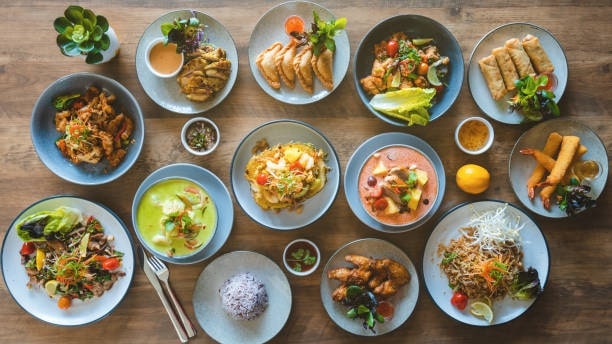
In a nutshell, Thai food is an international treasure that has been influenced by the cuisine of China and India, as well as the Malay people (who were the original inhabitants of Thailand).
The ingredients used in Thai food are native to Southeast Asia, while its cooking methods and methods of presentation are similar to those used in China.
Thai cuisine was traditionally prepared by stewing, baking, or grilling. However, the ancient Chinese are thought to have inhabited the region that is now Thailand, Laos, Burma (Myanmar), Cambodia, and Vietnam 1,400 years ago.
Food frying, stir-frying, and deep-frying techniques gained popularity with the influx of Chinese immigrants into Southeast Asia, and to this day, pad thai (fried noodles) and khao pad (fried rice) are still traditional Thai meals.
From the 17th century onward, Portuguese, Dutch, French, and Japanese cuisines all had an impact on food.
With this, if you’re craving for Thai food and you’re abroad, you can basically find them in some Indian restaurants, Japanese restaurants, especially Chinese restaurants.
How Thai Cuisine Changed with the Times
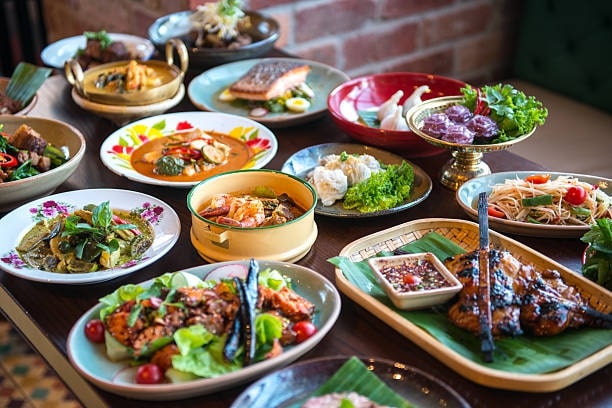
In 1511, the first Portuguese diplomatic expedition entered the kingdom of Ayutthaya, bringing with it Western influences.
However, the chilli pepper, which is today one of the most crucial elements in Thai cuisine, must have had the most prominent Western impact from the 16th to 17th centuries.
In addition, during the Columbian Exchange, Portuguese and Spanish ships brought new foods and ingredients with them, including tomatoes, papayas, corn, pineapples, pumpkins, cashews, and peanuts!
Moreover, through the ages, Thailand’s neighbours have also influenced its culinary traditions, and local cuisines frequently resemble those of the states that are next door.
For instance, the Shan State of Burma, northern Laos, and the Yunnan Province of China all share foods with northern Thai cuisine.
The Thais were also introduced to bean pastes, soy sauces, and tofu by the Chinese, along with the wok, deep-frying, and stir-frying methods!
Northeastern Thai cuisine is comparable to that of southern Laos, Khmer-speaking Cambodia, and Vietnam. Indian, Malaysian, and Indonesian cuisine all use a lot of coconut milk and turmeric in their cooking, as does southern Thailand!
Although the early Thai cuisine shared many similarities with the Szechuan province of China’s dietary customs, their subcontinental neighbours may have had the most influence on how Thai food was prepared.
Curries that featured ghee from India became highly popular, but the Thai people adapted the recipes to utilise native ingredients such as coconut instead.
The Portuguese introduced chilli spices to the area following the discovery of the Americas by Europeans, and these were later used in the notably hot cuisine that are still highly popular today.
Around this time, regional preferences began to differentiate themselves more clearly, with five or so regions coming up with distinctive meals that varied because of the region’s uniqueness in terms of agriculture.
Ways of Eating Thai Food
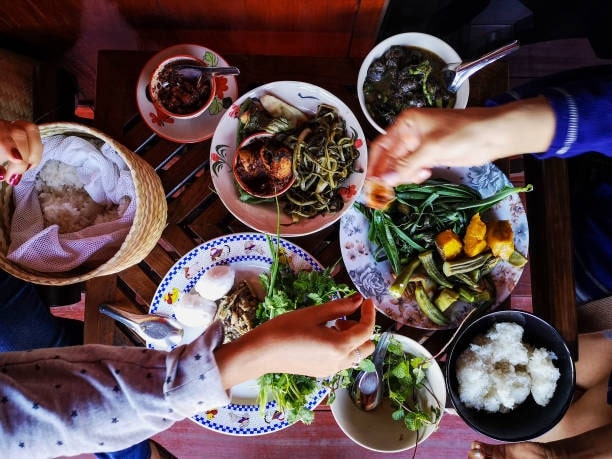
It is still customary in more traditional houses for people to eat Thai food with their right hand while seated on mats or carpets on the floor.
Nowadays, it is typically consumed with a fork and spoon. Chopsticks are rarely used, especially when eating noodles, despite China having such a significant influence on both the nation and the food.





